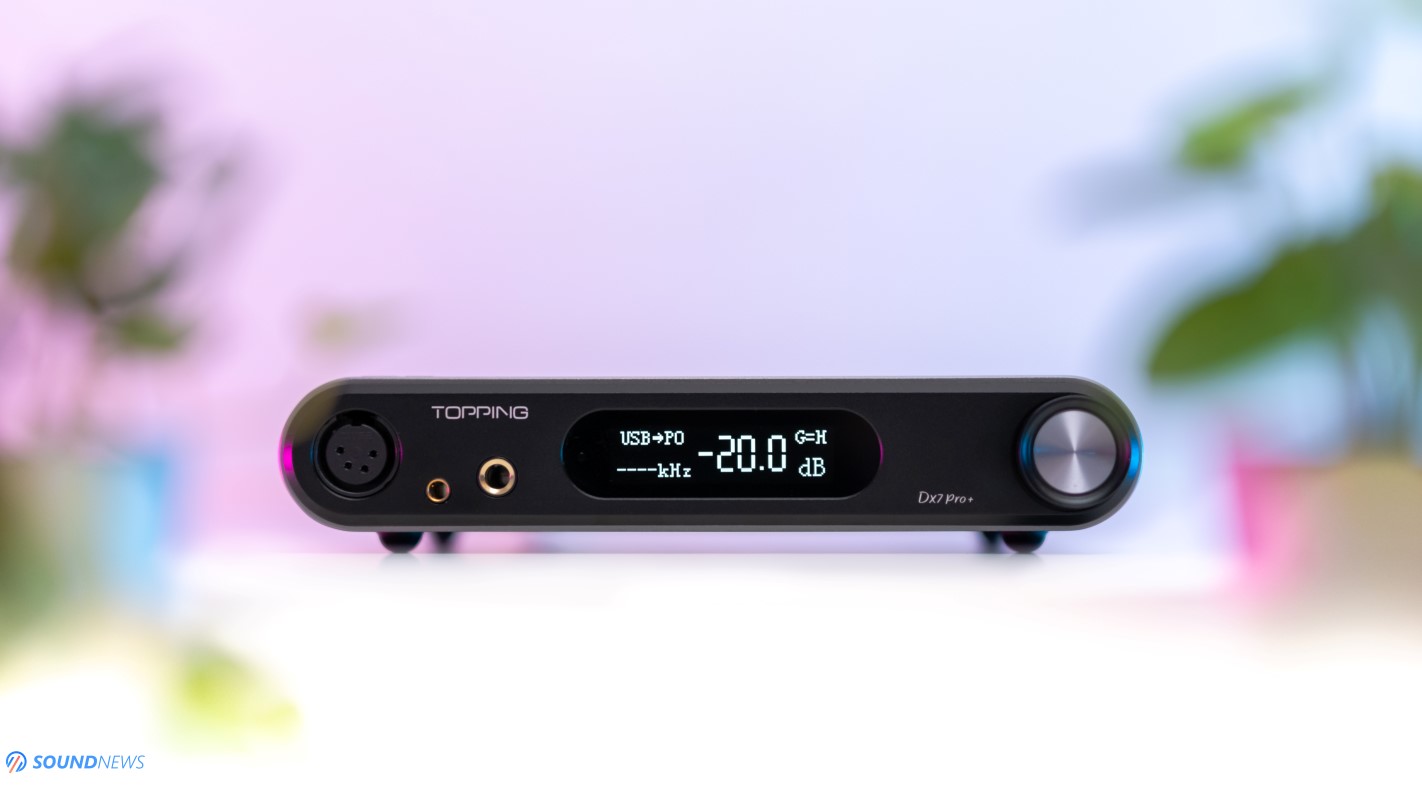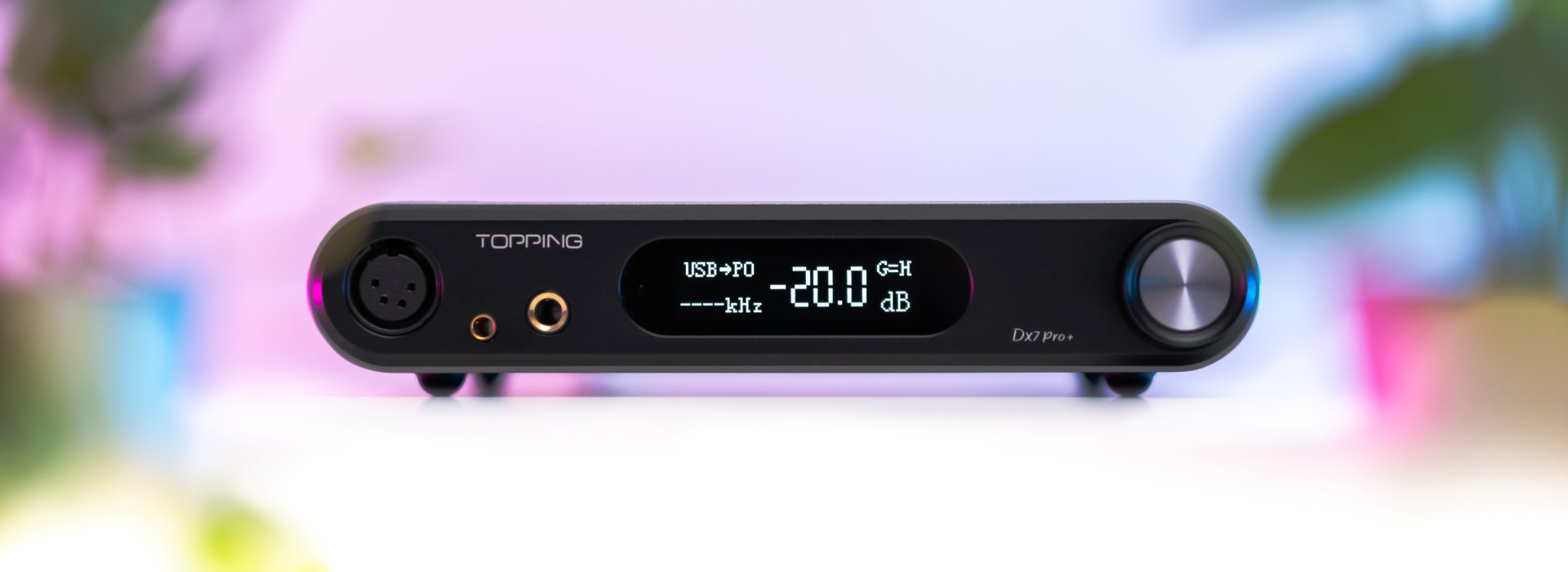
My Video Review:
Veni, Vidi, Vici. Just look how far Topping has come in the audio business. They started slow, dividing their legacy into three distinct segments: Building a name, dominating their competition and then ruling with an iron fist. Topping is here and it’s here to stay. Establishing a company name with a cherry on top, their biggest goal was perhaps changing our preconceptions that Made in China could still be identified with world-class quality and service.
When Topping released their DX7 do-it-all wonder box around five years ago, headphone junkies around the globe started humming the same song, as finally a fully balanced DAC and headphone amplifier could be had for as little as $399. It proved to be popular and fundamental to Topping’s ability to establish a foothold in the headphone audio market. Feature packed to its teeth with little to no competition, DX7 was the first product that got our full attention. It instantly became a hit, ringing a bell that personal audio is becoming bigger by the day. Next year, an updated DX7S was released, rocking newly released DAC chips and a reworked headphone amplifier section that provided a little more power on tap. The secondary wave was domination of the market that commenced around 2019, when Topping revealed their flagship DX7 PRO all-in-one combo. It smelled bad attitude from afar, rocking a flagship D/A converter, a powerful Bluetooth receiver, but most importantly, its power output tripled, providing some juicy 1.7 Watts per channel on its balanced outputs. DX7 PRO performed so good at its respective price point, that for several years in a row, they never bothered updating it with some of the latest tech as Nested-Feedback-Composite Amplifier (NFCA) modules.
Recently, Topping’s propaganda started sending cryptic messages, as a DX7 hashtag appeared in several posts on their social media platforms. It was obvious that a next generation DX7 could be felt in the air. A few months passed and a fourth iteration of the DX7 family tree appeared online. DX7 PRO+ was brought to the surface as a facelifted version of the acclaimed DX7 PRO. We are looking at a lightweight desktop DAC, Bluetooth receiver, preamplifier and headphone amplifier, that carries the latest NFCA tech, a top-of-the-line ESS Sabre converter used in current mode operation, all wrapped in a diminutive enclosure that will fit in the smallest office desks and petite headphone setups. The best part? It goes for $699, skipping additional boxes and unnecessary cables for the minimalist audiophile in you. As usual, I’ll be approaching it as a critic, but also as a music lover, commenting on everything I find interesting to share with you. Until that happens, let’s have a peek inside its box.
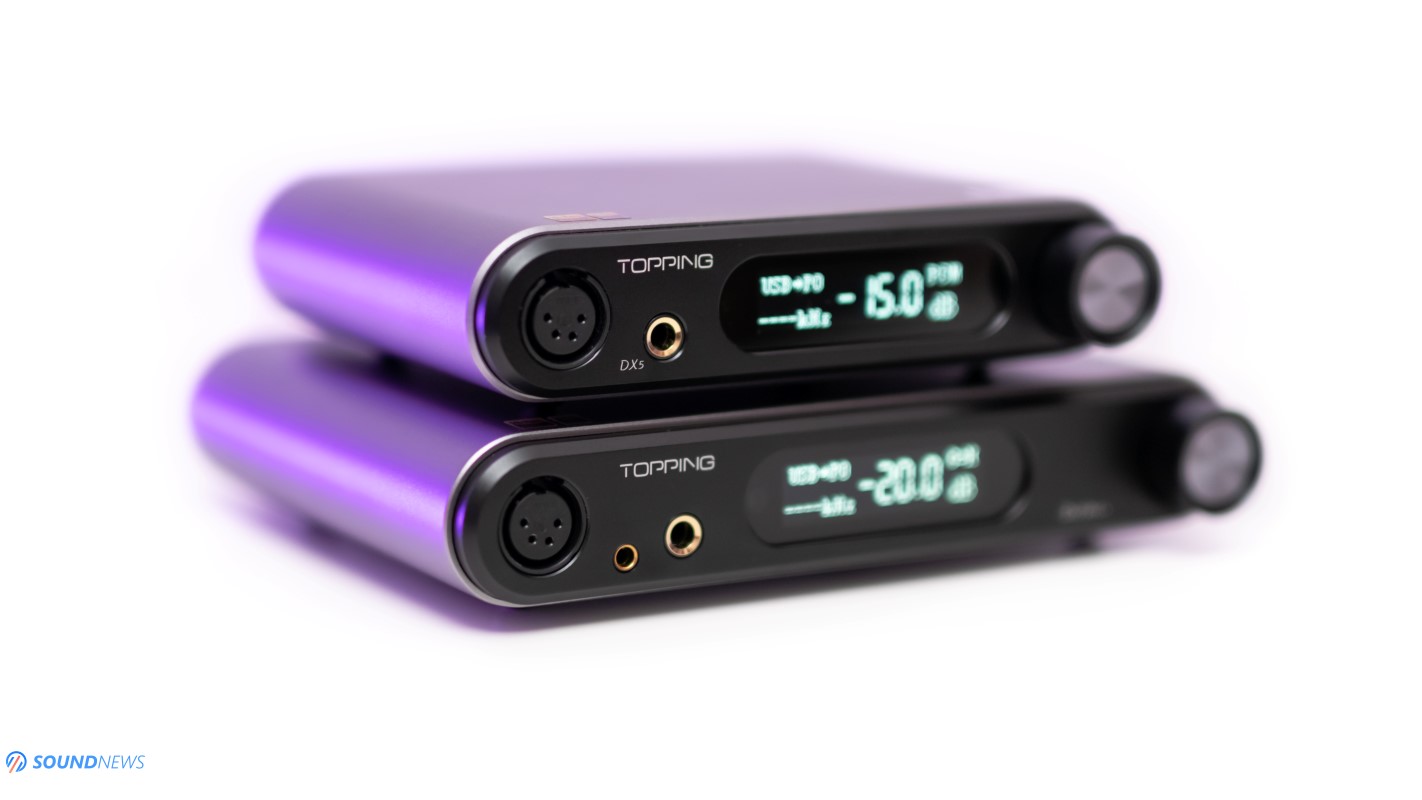
Unbox Therapy
Unboxing experience is quite positive and I have no complaints. It’s the same packaging that I’ve seen so many times by now. It came double-boxed with a lot of foam for a better protection during shipping. In usual Topping fashion, there’s an impressively detailed user manual that contains actual measurements as Frequency Response, FFT Spectrum (noise levels), FFT Spectrum for its digital filters, Multitone test, THD of headphone outputs and SNR. The same good old Topping RC-15A remote control is present in the box, there’s a power cable, a USB Type-B cable, a huge Bluetooth antenna, a 6.35mm to 3.5mm headphone adapter and a warranty card that doubles as a product catalogue. As with all their converters, there are hidden menus and additional features that can be accessed only with the included remote, but more about that will be revealed soon.

Design & Build Quality
Ever since winning RedDot and Golden Pin Design awards with their newest DX5, something was telling me that an identical oval-shaped case would be used in here as well. As for me, I like the simpler look of the old DX7 PRO a little bit more, it’s easier on the eyes and I’m more relaxed with the usual look that I know for quite some time. Design wise, the newest unit took a 180 degree turn, it’s more Future-Fi in a way and Topping describes it as gorgeous looking from every angle. Sleep tight my friends, as we’re still dealing with a high-quality craftmanship and with a fully CNC machined aluminum case. It’s a little thinner this time around, but the front plate remained exactly as thick, repelling all forms of wireless interference. Its case lost some weight, as it no longer houses a linear transformer and, in the end, it will occupy less desktop space. It looks like Topping didn’t craft it for the audiophile crowd, as a fresher look should win over a few gamers and cinephiles.
The whole body has smoother lines, all the screws were moved to its back, a common practice in Topping’s portfolio. On its front plate you’ll find a volume wheel that powers on the unit, a monochrome OLED screen sits exactly in the middle – that can be dimmed or brightened, three headphone jacks are located on its left and that’s pretty much it. Its rubber feet were placed in perfectly cut round spaces and those wouldn’t budge when dragging it over your table. I find them tall enough, so you can stack it with stereo equipment of all sorts and since it doesn’t get blazing hot to the touch, you can place a higher performance (read: hotter) headphone amplifier on top or below it.
There are two color options: matte grey (my review unit) or matte black and in both cases, it’s equipped with a really high WAF. Weighting around ~1.1 kilos and measuring only 220 mm wide by 180 mm deep and 44 mm tall, DX7 PRO+ is small and lightweight enough to be used in tiny office desks and Mickey Mouse stereo setups. All in all, Topping always cared for the look and build-quality of their units and DX7 PRO+ didn’t disappoint a single bit.

Controls & Connectivity
Its front panel looks clean and tidy and you won’t find a single button in there. Besides a 4-pin XLR and 3.5mm headphone jack, a 4.4mm Pentaconn jack sits in between them, which adds a lot of value. Its knob feels smooth to the touch, but offers little to no resistance, so extra care is needed when handling ultra-sensitive IEMs.
There’s a bright monochrome OLED screen in the middle of the unit that will show important information as the selected input, output, the working mode (Bluetooth / DAC / DAC + PRE / DAC + HP mode), the sample rate, PCM or DSD data stream and the volume level if the preamp mode is engaged.
On its back all the nicer digital inputs are present as: USB, I2S, Optical, Coaxial, AES and there’s a Bluetooth antenna socket too. Being a fully balanced DAC, it offers a pair of XLR and RCA outputs. Both are volume controllable or fixed, depending on the settings and you can even disable the secondary pair if you please.
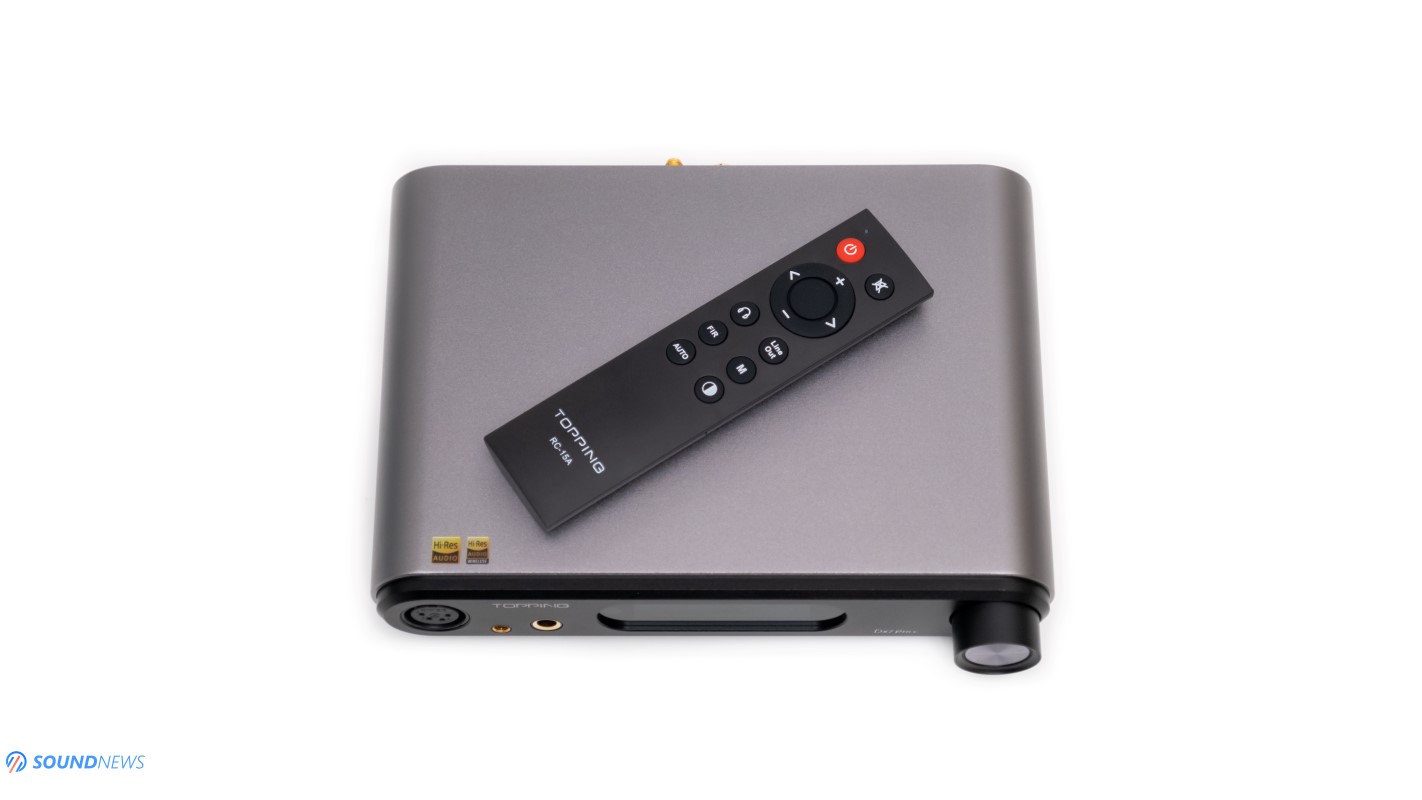
Tech Inside DX7 PRO+
At the time of writing, Topping didn’t offer a spec sheet and didn’t mention anything that would aid me in better understanding the unit and that’s precisely why my trusty iFixit Pro Tech toolkit jumped at me and I started disassembling the unit.
Topping used a top-of-the-line ES9038 PRO 8-channel DAC chip of ESS Technologies. This is their best and most premium converter. Topping has already plenty of experience with this particular chipset, as they used it already in several devices as DX7 PRO and their flagship D90SE DAC is also powered by it. ES9038 PRO is quite an interesting silicon, as it can work in mono, stereo or 8-channel mode, in either current-mode or voltage-mode operation. Most ES9038 PRO designs that I know of are using it in stereo configuration with a voltage mode operation due to a lower cost, R&D and that’s perfectly fine. However, if you want maximum performance out of it, this particular silicon gives a lower total-harmonic-distortion if current mode is being used. This configuration adds to the cost, as a powerful I/V (current to voltage) conversion stage needs to be built around the ES9038 PRO. The better the I/V conversion stage is = the higher precision can be squeezed from the DAC chip and the same can be said about its operation mode, as in mono mode it will output a higher dynamic range.
Topping developed a custom I/V conversion stage, calling it IV-01, encapsulating it in a metallic box and shielding it completely from remaining EMI and RFI interference. I’m not sure if all 8-channels are being used in parallel, squeezing the best this silicon is capable of, but I hope that was the case. I couldn’t see half of its PCB, as a ribbon cable was holding it in place. I couldn’t see the output (LPF) stage and what op-amps were being used, but I’m going with an educated guess that two OPA1612 are sitting in there.
Accusilicon femto-second clocks were replaced with precise clocks of a different brand. I can’t see their markings, but I’ll go with a wild guess that Topping ordered custom batches, according to their specifications.
Topping left untouched its Altera Max II FPGA that is working in tandem with a clocking system. An ARM CPU is also present and the (in)famous XMOS XU-216 interface takes care of the USB and I2S input.
For a good Bluetooth codec support and stable connection, they went with the newest and highest performance QCC5125 BT receiver from Qualcomm, that unlocked some of the best codecs as AAC, SBC, AptX, AptX-LL, AptX-HD, AptX-Adaptive and LDAC. Bluetooth version 5.0 and a bigger antenna will achieve a stronger signal even with two concrete walls in between the source and the DX7 PRO+.
As it was the case of D90SE and DX5, Topping replaced a regulated and linear toroidal transformer with a Meanwell switching-mode power supply and while that might sound like a downgrade, Topping replaced its tiny voltage regulators with a bigger and higher-performance isolation transformer (DC to DC converter) that bypassed the need of big electrolytic capacitors. That’s right, you won’t find big ELNA, Nichicon or Panasonic caps, as DX7 PRO+ doesn’t need any of that!
Now, here comes a surprise which I’m really excited about. Its headphone amplifier section is based on their extremely popular NFCA (Nested Feedback Composite Amplifier) circuitry that is being used in their top-of-the-line A90, but also in affordable units like L30, L50, A50S and A30 PRO for a while now. Topping redefined the Nested Feedback topology by employing an Ultra High Gain Feedback and a Voltage Current Hybrid architecture. In simple words, the biggest drawbacks of the composite amplifiers of the past (low-gain, low power output, increased resistance) were dealt with and those no-longer apply to the newest Topping analog designs. Topping squeezed almost ~2 Watts per channel (1900 mW to be more precise) in 32 Ohms and 300mW in 300 Ohms on both its headphone jacks…meaning that DX7 PRO+ doesn’t have a true balanced headphone amplifier circuit. However, it needs to be mentioned that this is still their most powerful all-in-one combo and for a minimalist audiophile, that’s important information. If you’ll use an external amplifier with it, DX7 PRO+ outputs a true balanced signal via XLR outputs, delivering up to 4.2 Volts and half that number on its RCA outputs. Output impedance stays incredibly low and at only 0.1 Ohms, I’m sure that its damping factor wouldn’t be affected with low-impedance IEMs.
As you can see, the power supply, filtering stage, clocking system, I/V conversion stage and NFCA amplifier modules are brand-new, never to be seen on former Topping DAC/Amp combos. There are slightly more chips inside and that’s why it will dissipate a little more heat, as DX7 PRO+ is a little warmer versus their past DAC/Amp combos. Okay lads, let’s check some tips & tricks and then let’s move on to sound performance.
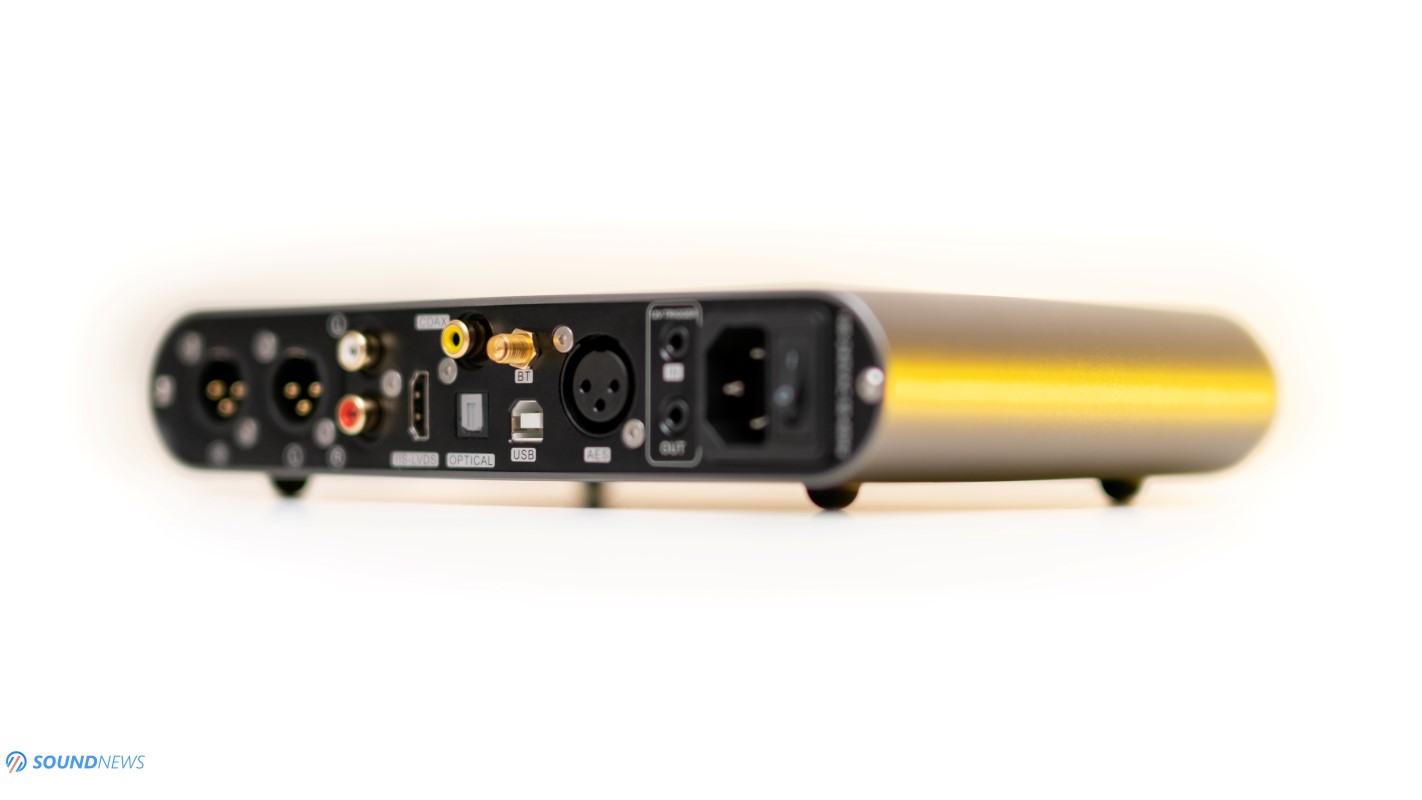
Tips & Tricks
There are several features that can only be accessed by its remote control, including a few tricks that will help you achieve the absolute best performance out of your freshly acquired DX7 PRO+
There’s a hidden menu which can be accessed by turning it off completely (with the switch on its back), press and hold the button in the middle of its volume wheel and turn the power switch to on position. An advanced menu will appear, from which several settings are mandatory:
- If you’ll be using it as a DAC + Headphone amp combo, then I recommend switching to high gain, since it’s noiseless with IEMs on either gain setting – it’s the setting no.3
- If you’ll be using it as a DAC only unit, then I recommend switching to DAC mode, completely bypassing its volume control – it’s the setting no.5
- If you’ll use a single analog output, be it RCA or XLR, then I recommend disabling the second output – it’s the setting no.6
- If you don’t plan on using its Bluetooth receiver, then I recommend disabling its Bluetooth module for good – it’s the setting no.7
- If you intend on using an external digital-to-digital converter (DDC) like Topping’s U90, then I recommend switching DAC mode to SYNC and if you’ll use it without a DDC, feeding a USB signal from your PC/laptop, then you should switch back to ASYNC mode – it’s the setting no.8
- If you check the user manual carefully, the FFT Spectrum will show the measured difference of its digital filters, out of them Filter 3 (default) and Filter 7 have the lowest ringing past 20 kHz. Use filter no.7 for a smoother top end and filter no.3 for a better treble extension
- Lastly, Topping developed two sound presets that are working on a hardware level. You can choose between Transistor Sound, Valve Sound or Sound Mode Off. Pick the one that suits you better. If you want the warmest and smoothest possible sound, then Valve Sound will give you exactly that.
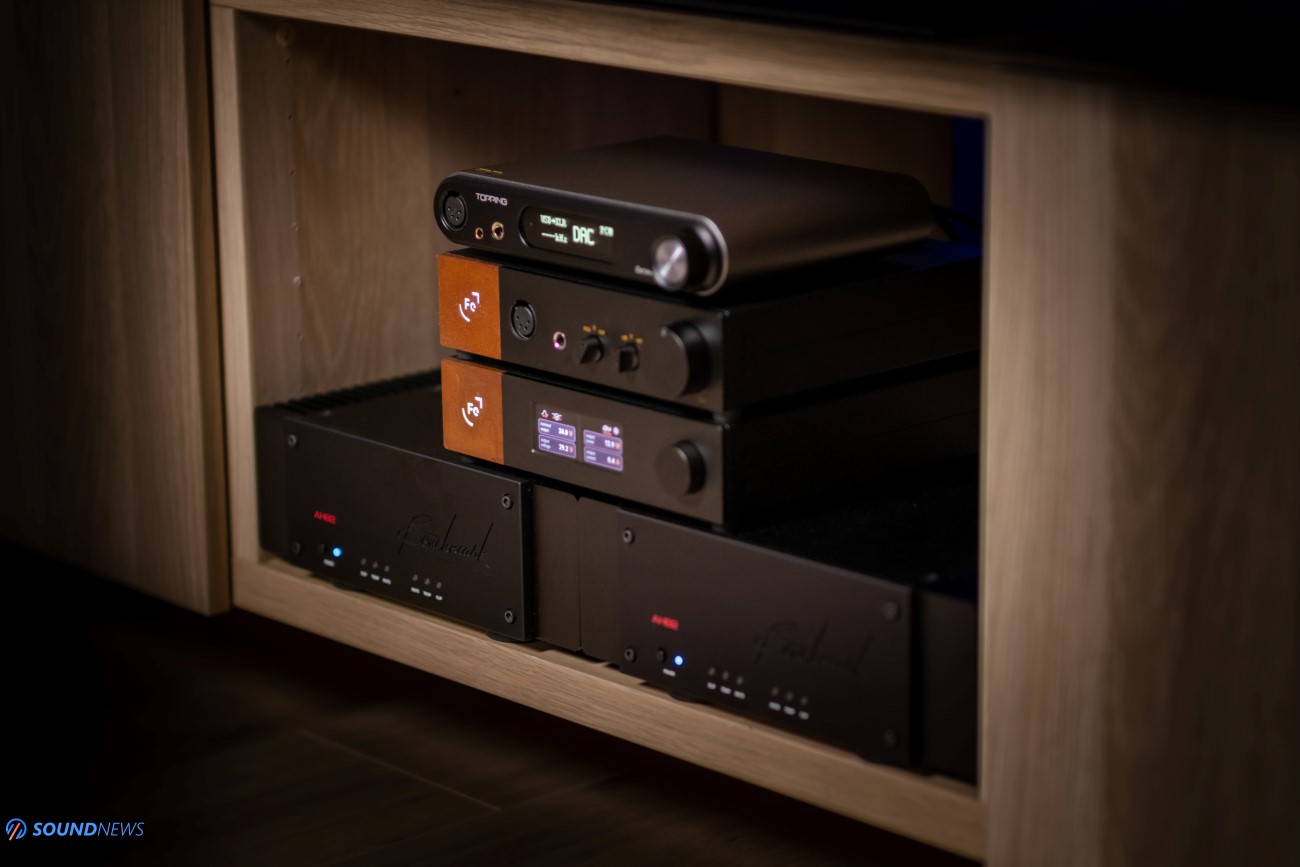
Test Equipment
I tested it in a high-end loudspeaker setup, but also in a headphone setup. In the living room I’ve tried it as a DAC + Pre unit, powering two Benchmark AHB2 power amplifiers that were driving a pair of KEF Reference 3.
In a headphone setup, I used its headphone output the most, but I also connected several headphone amplifiers to it, driving all sorts of planar-magnetic and dynamic headphones. Okay folks, enough with the talk, let’s hit some ear-drums!

Sound Performance
I. Preliminary Sound Impressions
If you’re wondering how the newest Topping combo is sounding more exactly, then prepare in advance for a miniature version of their D90SE DAC and A90 headphone amp stacked together. It isn’t getting the same power reserve, unlimited headroom and tight control of the drivers, but the sound signature is definitely, very similar.
The little DX7 PRO+ came out highly detailed, showing off smallest nuances hiding behind your tunes without too much trouble. Its neutral approach to music reproduction worked excellent with warm and dark tilted headphones and loudspeakers. For example, most Kennerton, Meze Audio and Audeze headphones performed above my expectations and I was able to disconnect me from the outside world for a few times. In its stock configuration, it doesn’t focus on the emotional side of music listening, as their D70S, D30 PRO and A30 PRO were doing so easily, luckily that Transistor and Valve Sound options are coming to the rescue, making a substantial difference sound wise, a bigger one compared to any of its digital filters.
I particularly liked its Valve Sound that relaxed the top octave and added more energy in the midrange, for a fuller, smoother and easier going sound. I would never guess that I’m listening to an ESS-Sabre and NFCA equipped unit if Valve Sound mode would be engaged. I’m using tube amplifiers on a daily basis and I know their sound quite well and it seems that DX7 PRO+ tries to mimic their stimulants, by presumably elevating the second and third order harmonics that added a pleasing distortion and a full relaxation of body and mind. The only thing I didn’t enjoy as much, was its softer presentation in the long run, hurting the transient response, especially the final kick into my eardrums. If you’re into modern tunes, craving for a faster and punchier performance, then you can switch to Transistor Sound, after which it will show some nerves and a nastier attitude at the cost of some lost refinement.
Topping is no longer providing a single love it or hate it sound signature, as you can put two units near each other and they can sound totally different and that’s the coolest thing Topping developed so far. In either mode, it will never lean towards brightness or listening fatigue and I’m no longer getting a thinner sound of the regular DX7 PRO, especially in the midrange department.
Another pleasant surprise was experimenting with its headphone amplifier section, as besides driving all sorts of dynamic headphones, it was nicely controlling a substantial collection of planar headphones. The biggest standouts were Meze Elite, Kennerton Rognir and Audeze LCD-4 that refused hitting the brakes, sounding quite visceral and engaging for the most part. It wasn’t running out of steam with them and that’s already a good sign in my book.
As all NFCA headphone amplifiers before it, DX7 PRO+ provided an otherworldly sensation of speed, transparency, high quality bass, browsing through layers and sub-layers of information. If clean power is your wildest desire from a single box solution, then Topping’s newest combo will deliver you a substantial amount of power, without elevating the noise floor or adding a higher distortion into the mix. Of course, it won’t compete with upper-class combos, as Ferrum ERCO or Burson Conductor 3X GT, but at its respective point, not a lot of units can be praised for a similar technical performance.
While it wouldn’t’ push the soundscape past my shoulder level with open-back headphones like upper class combos would do, it delivered a precise imaging, being highly focused with all my entire music collection. It was locking on any target in microseconds and I could focus on the tiniest details playing in the background without too much trouble. It’s hard to believe that such a clean and transparent sound can be achieved at this price point. DX7 PRO+ will definitely impress with its highly technical sound, just don’t forget that you can alter its voicing with sound color options and digital filters that are working on a hardware level.
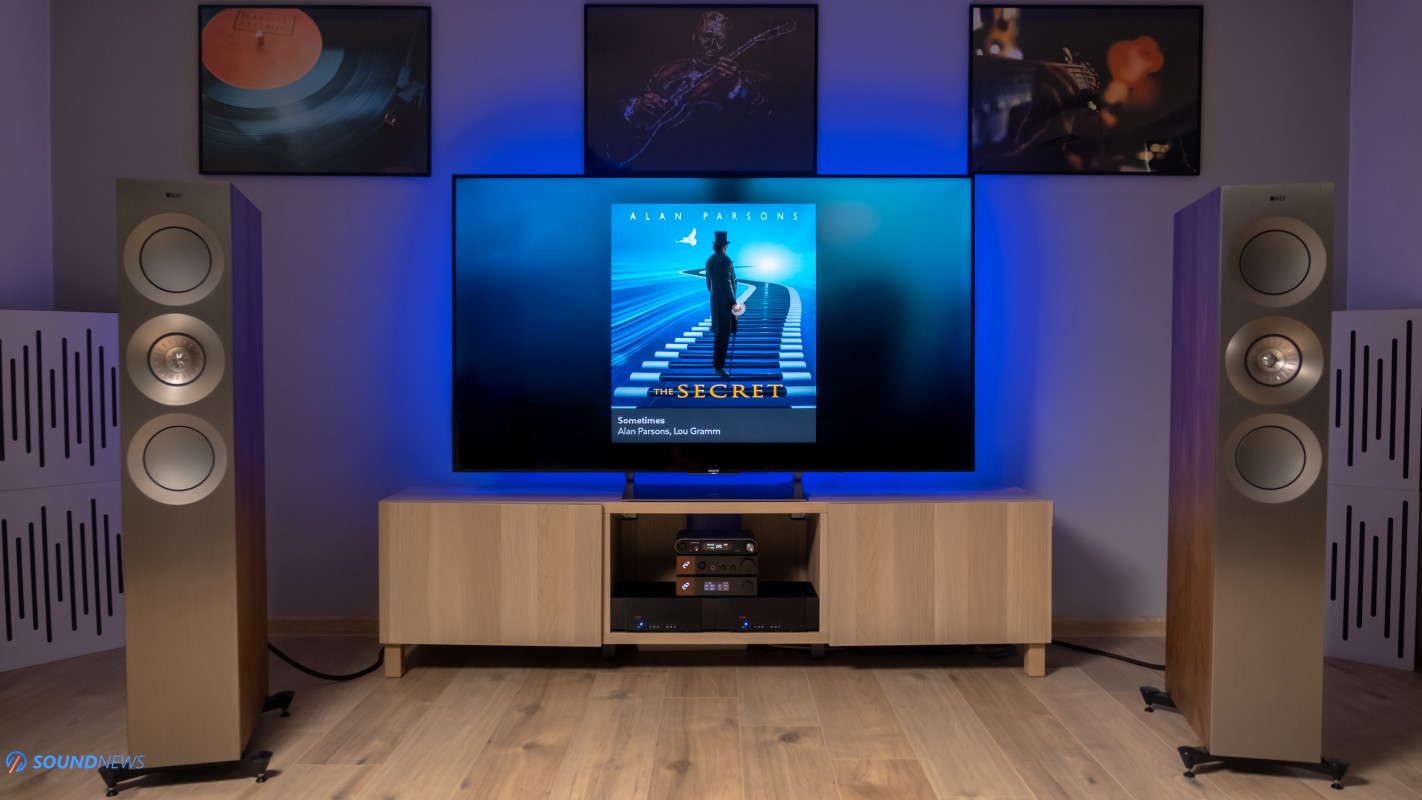
II. DX7 PRO+ in a Stereo Setup
Their newest all-in-one unit isn’t using analog relays for a perfect volume matching, you won’t find a high-end stepped volume attenuator either, nor a line-amplifier (preamplifier) circuit, but it work as a preamp controlling active monitors you can even use it in a mid-range loudspeaker setup. In its defense, it seems that Topping lowered its noise floor to inaudible levels, so you can connect a power amplifier directly to it, without expecting nasty gremlins playing in the background. The output impedance stays rock solid at 100 Ohms on both RCA and XLR outputs, making it a decent preamplifier with no strings attached.
After connecting it to a Ferrum OOR + Hypsos that worked as a dedicated preamp, followed by two Benchmark AHB2 power amplifiers connected in mono mode, a substantial amount of low-level information came forward compared to a Gold Note DS10 Plus + PS10 Evo ($4000) which mind you is a lot more expensive, that usually stays in the living room working as a streamer, DAC and preamp. I wasn’t expecting much of a difference, but the Topping unit sounded clearer, sharper, tighter and more focused. The sound was a little bigger and I didn’t need to raise the volume that high, filling every corner of the room with sounds. While DX7 PRO+ was used at the front end, take into consideration that Ferrum OOR + Hypsos were giving a Hulk-sized helping hand, adding fullness, midrange presence and bass density that DX7 PRO+ couldn’t deliver on its own. ESS-Sabre converters aren’t conquering my heart when it comes to midrange presence, depth and layering, but with the right selection of components and with the right preamp, I guess everything is possible.
When I removed the Ferrum OOR and let it work as a DAC and preamp, some naturalness went away, there was less rumble in the bass and a thinner, less impressive midrange delivery, but everything else as transparency, speed and control of the drivers remained intact. I played the guess game with and without the Ferrum OOR and there was a clear difference. I would probably use it alone in an entry to mid-fi setup or in a nearfield setup powering active monitors and in a proper stereo rig, I would add e dedicated preamplifier. Ferrum OOR + Hypsos are expensive and overkill for the job and maybe investing in an affordable preamp would be a better idea. The newest Topping A90 Discrete would add some color, boost its bass and midrange presence at a more affordable price.
DX7 PRO+ doesn’t have an actual line-amplifier circuit (like Matrix Audio Element X/X2 or Rockna Wavelight does), nor a fully discrete output stage, so it can’t be taken seriously in an end-game stereo setup. It worked decent enough on its own, but my Reference 3 needed a little more soul and a fuller tonality coming from downstream equipment. Their transparent and speedy presentation remained intact, at the cost of being less soul-grabbing without a dedicated preamp in the audio chain.
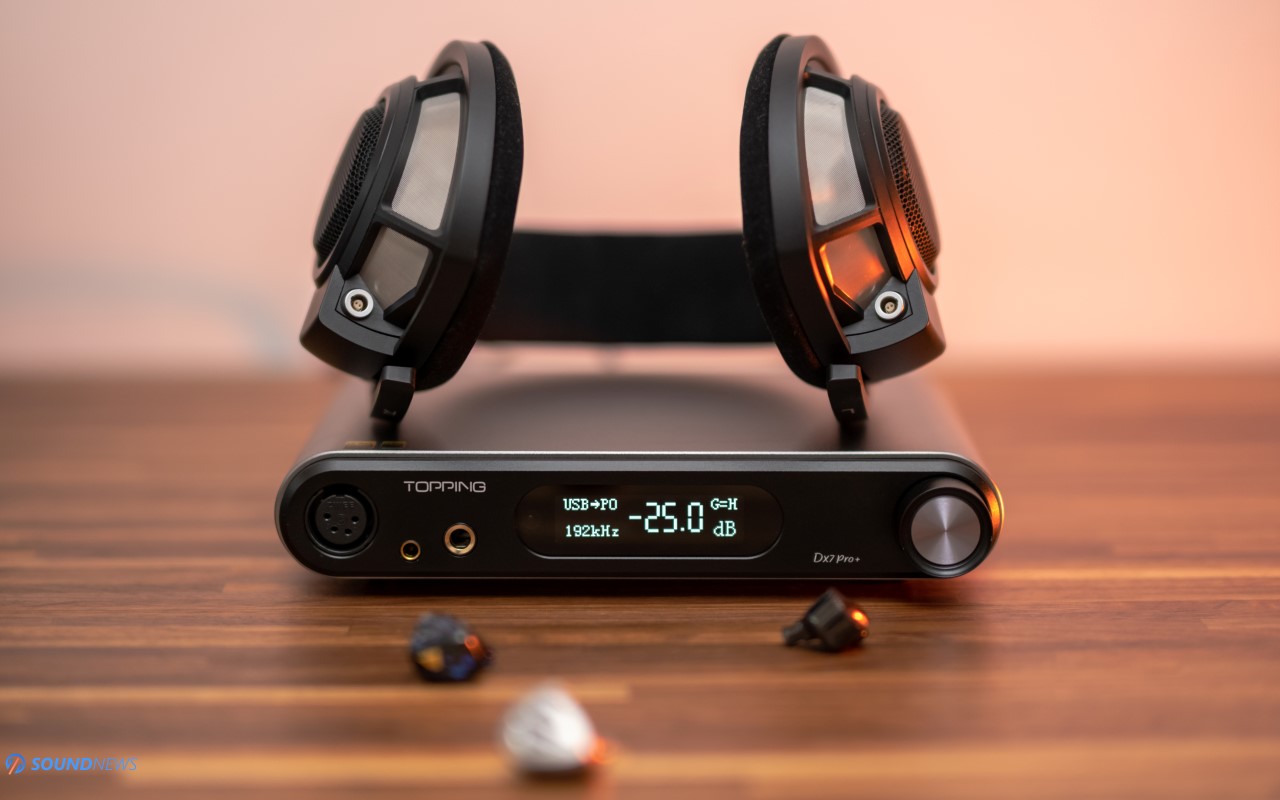
III. DX7 PRO+ in a Headphone Setup (Power Output)
Considering its size, weight and working mode, I believe that almost ~2 Watts of power in 32Ω on all headphones outputs is a very respectable number, that should drive almost any headphone, except for low-sensitivity ones as Hifiman Susvara / HE-6, Abyss AB-1266 and all its variants.
Starting with sensitive dynamic headphones and finishing with hard to drive planar-magnetics, it didn’t have issues driving them on high gain, including the Audeze LCD-5, LCD-4, Erzetich Phobos V2021, Kennerton Rognir (planar) and Sennheiser HD800S. DX7 PRO+ drove every headphone I had around, except for the Hifiman Susvara that needed a much higher gain and way more power to be awaken. Everything else sounded quite impressive, soundstage opened up or shrunk in size depending on the music, transparency was to die for, detail retrieval challenged the cleanest sounding amplifiers and there was a good control of the drivers. Bass notes weren’t going to the deepest pits and midrange wasn’t as full-bodied as I wished for, but apart from that, I liked its overall performance. Audeze LCD-4 was the most difficult task, as only ~10 dBs were remaining on tap with regular music. When I moved to high dynamic range tracks and DSD recordings, sometimes I could be maxed out on its volume wheel. On one hand, it wasn’t clipping or heavily distorting which was great, on the other hand, dynamics weren’t flying sky high as I wanted them to be. With Kennerton Rognir and Erzetich Phobos V2021 I had around ~15 dBs remaining on tap and those definitely performed better on all fronts, nicely controlling their driver, while sounding fast and quite punchy.
It was fast and nimble at all times, but dynamics weren’t reaching their peaks – a clear sign that DX7 PRO+ was running out of steam with headphones like LCD-4 and LCD-5. The only headphone that didn’t work a single bit was Hifiman Susvara. There wasn’t enough power on tap, it felt lifeless and boring, without awakening nicer dynamics, but I was already prepared for this and it shouldn’t come as a surprise to anybody. For heavier loads I wouldn’t recommend the DX7 PRO+ to be used alone, but for a budget-oriented setup, it would work great with most headphones out there.
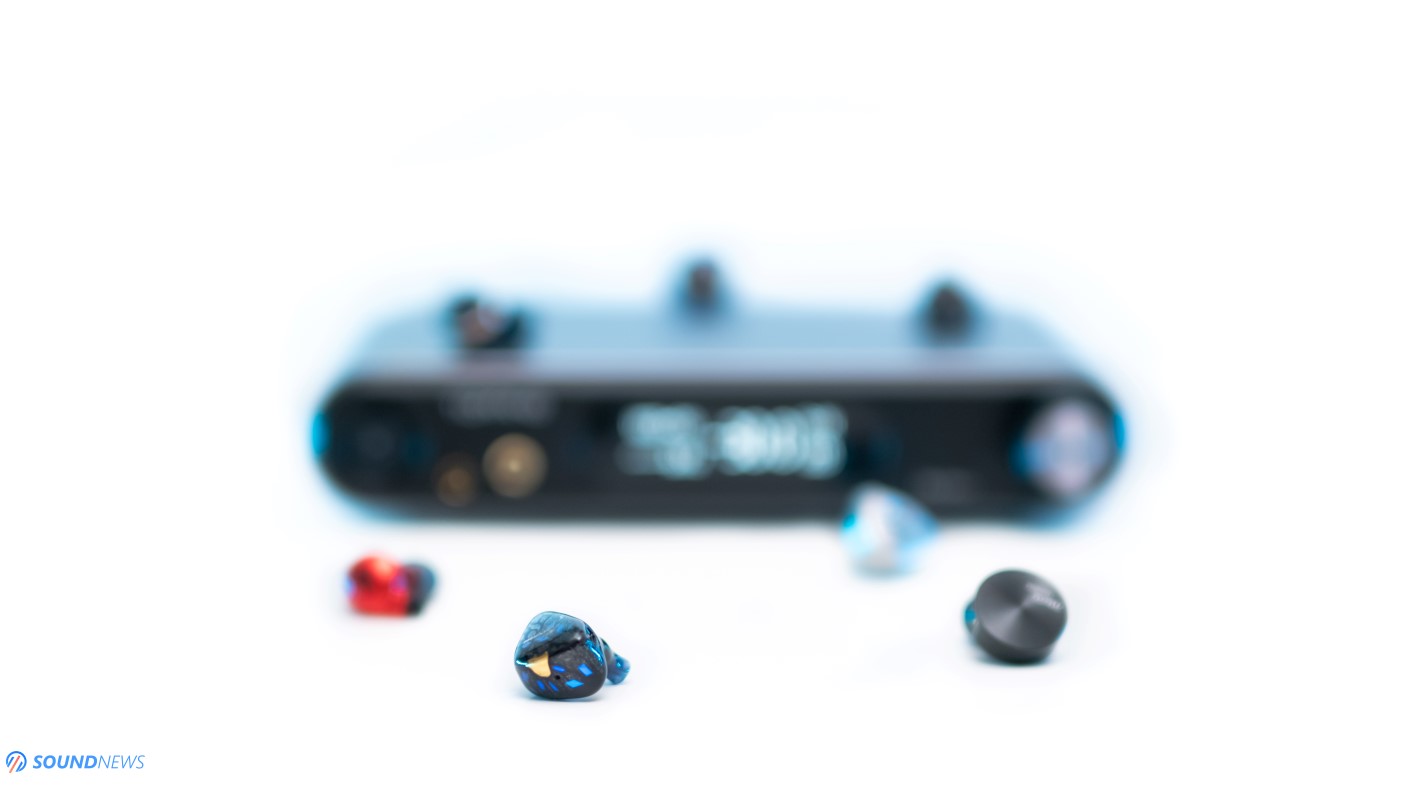
IV. DX7 PRO+ with IEMs (Noise Floor)
Alright folks, this will be a shorter chapter as I’m getting a strong feeling that I’ve listened to this unit over and over again and that’s because it performs similarly to mid-level amplifiers that are using noise shaping techniques as nested feedback (NFCA), negative feedback (PLFC) and feed-forward correction (THX-AAA). Such units are deleting remaining noise within the circuit by default, without interventions from our part. Topping measured its noise floor at 2.5 micro-Volts on high gain and 1.2 micro-Volts on low gain, but since their audio analyzer is adding a bit of noise on its own, DX7 PRO+ noise floor sits below those numbers by a tiny bit. We’re talking about instrument-grade, world-class performance and I’m putting it in the same boat with units like Topping A90, Singxer SA-1, SMSL SP400, even Benchmark HPA4 that performed in a similar fashion. Topping are using switching mode power supplies nowadays in all their devices and while I’m not a huge fan of such implementations, with proper engineering skills, filtering and regulation stages, everything is possible.
Be it low or high-gain, zero or maximum volume, I couldn’t spot that the amplifier was even powered on! Dynamic driver IEMs, hybrid or full-armature IEMs weren’t showing an increase of the noise floor at any volume levels, transforming it into an IEM friendly unit. Even via its 4.4mmm balanced output, I couldn’t sniff traces of noise, which is an exemplary performance in my book. Considering its low power design and incredibly low noise floor, I would never use low-gain even with sensitive IEMs, as there’s no need for that. There’s enough volume travel on high-gain, making low-gain redundant with ultra-sensitive IEMs. High gain never added fog or hum, as it sounded completely noise and grain free at any volume or gain position.
In the end, I’ve got a pitch-black background and a noiseless performance with all my IEMs, regardless of their sensitivity. Gremlins weren’t dancing around; nasty noises were banished for good and there isn’t much to add in here. With a near zero output impedance and inaudible noise floor, you will be surely testing the limits of your IEMs and ears.
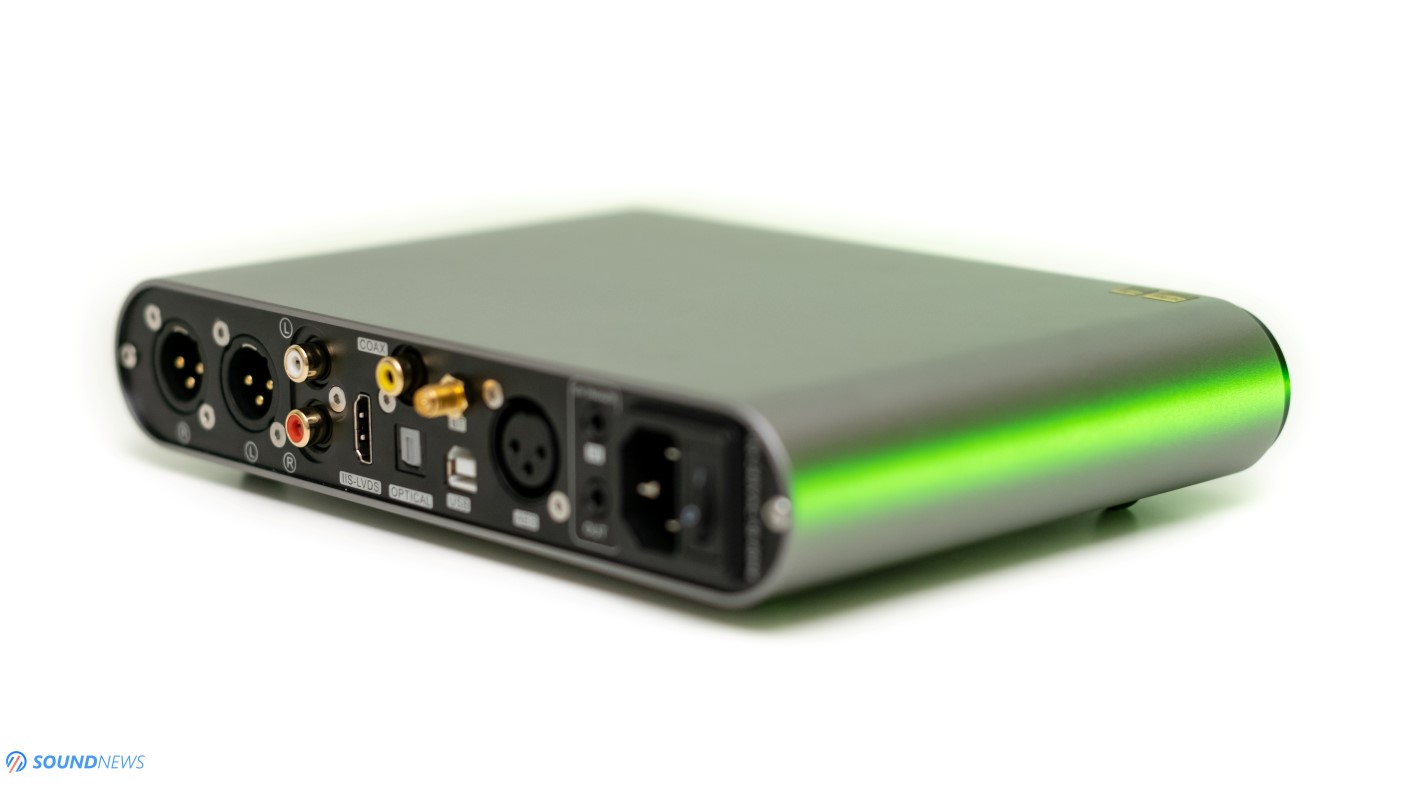
V. Transient Response
The newest Topping amplifiers and ESS-Sabre converters are regarded as fast sounding, providing shorter decays versus transistor or tube-based amplifiers and that was certainly the case in here. DX7 PRO+ will easily keep up with modern tunes as pop, rock and electronica, going with lightning quick transients and quick shifts in dynamics. I’ve got defined double drums, a decent bass impact and a world-class treble performance. Leading edges were a little sharper compared to traditional Class-A amplifiers, but there were still traces of liquidity, especially after engaging its Valve Sound mode. A close to zero output impedance preserved damping factor and its wide-bandwidth design never limited the power output and you can be sure that nothing would be pressing the brakes with your music. Decay of the notes were lightning quick and sometimes I longed for a longer vibration, especially with string-based instruments, as everything happened in split seconds with sounds going in and out instantaneously.
As days were passing by, I started to understand that something was missing, something wasn’t as impressive, as my upper-class planars didn’t sound as I know them on top-tier equipment. Especially, Audeze LCD-4 and LCD-5 were lightly pressing the brakes in terms of dynamics and bass slam. DX7 PRO+ wouldn’t pound with an incredibly force and will never put you in between the hammer and the anvil. My electronica tunes sounded like I traded the LCD-4 with gentler sounding headphones. Bass notes didn’t have as much authority down low, I felt them ethereal and lightweight in their presentation and that’s why Topping still sells dedicated desktop headphone amplifiers like A90, A90 Discrete and many others would sound more impressive down low with harder to drive headphones.
With most of my cans, there was a decent impact and kick into my eardrums, but I wouldn’t call it visceral or hard slamming. The low-end felt polite and on several occasions, I wished for a higher quantity. Most of my cans were good to great, but power-hungry ones weren’t as engaging and alive as I know them to be on proper desktop headphone amps. It didn’t smash and pound my eardrums, reminding a little about its smaller brothers as DX5 and EX5. All in all, we are getting a 9 out of 10 speed and a 7 out of 10 bass slam and impact.
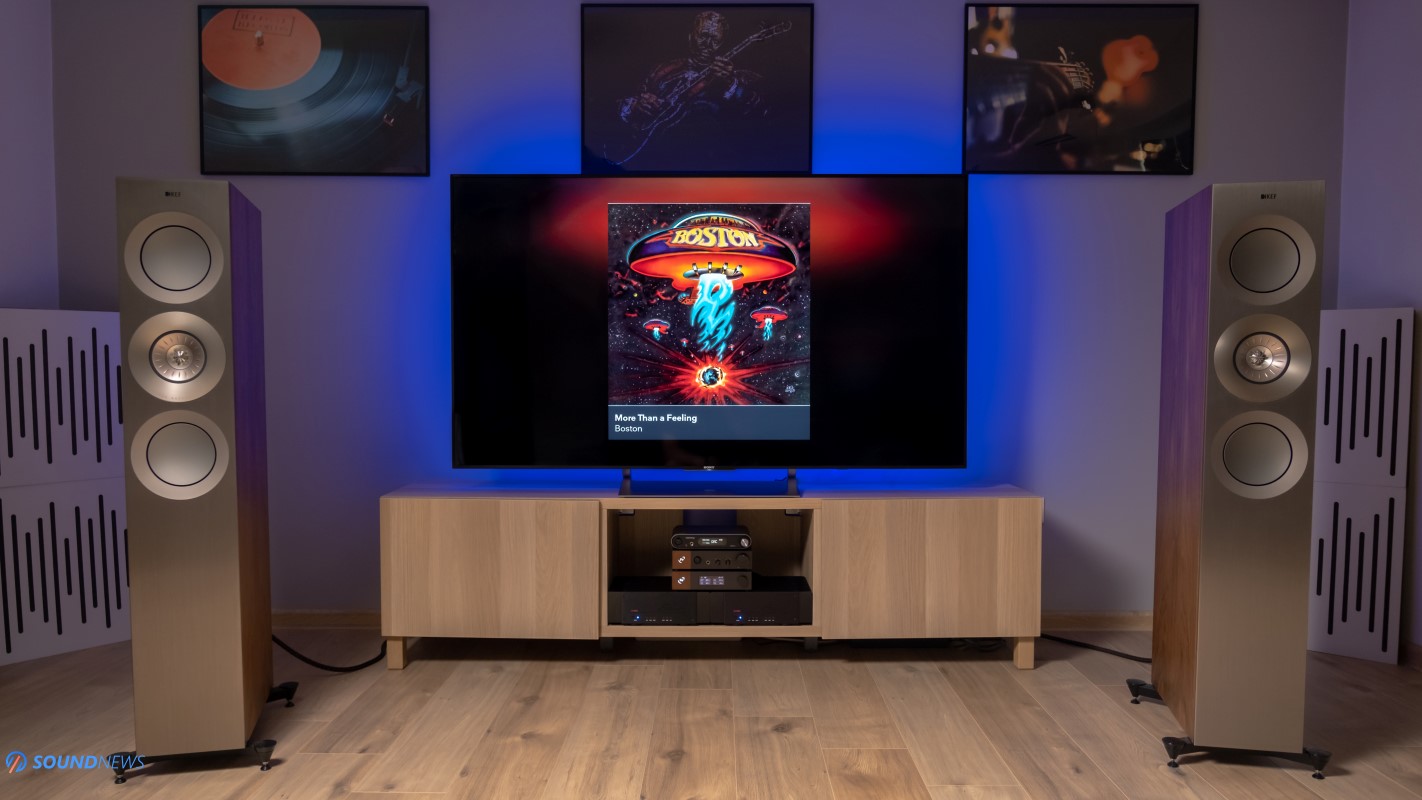
VI. Soundstage & Depth
Topping couldn’t fit inside a serious LPF and headphone amplifier stage, they couldn’t double its amplifier circuitry for a fully balanced configuration due to a smaller footprint and lightweight chassis. No matter if you are using the 4-pin XLR or the regular headphone jack, you’ll be getting the same results and by that, I mean a clean, undistorted power that lacks noise even at maximum volume…but it wouldn’t stretch that stage wide open and it wouldn’t fill empty spaces with layers and sub-layers of sounds. If your headphones are fully driven by it, then it will be infusing a decent amount of air in the most crucial places, it would stretch wider or shrink the sound scape depending on the music that is being played. Add distorted rock or metal, maybe cluttered electronica tracks and it will start choking and closing in its soundstage. It was still wider and deeper on all axes compared to its smaller brothers as DX5 and EX5, but it wasn’t as impressive as A90 and A30 PRO sounded to me. It’s impossible making a small and affordable unit that would sound great on all and everything, there are still compromises to be made and it seems that soundstage & depth were hit by the downgrade hammer. Limited soundstage, depth and bass slam are the biggest drawbacks of the DX7 PRO+, but after adding a dedicated headphone amp, you will certainly counterbalance those issues.
With all that said, if your headphones are fully driven by it, then its soundstage wouldn’t be as claustrophobic or closed-in. It was only the case with harder loads, losing air, definition and control. As a side note, all NFCA, PLFC and THX-AAA amplifiers never excelled in this department, regardless of their price point, even my former Benchmark HPA4 ($3000) didn’t sound wide open, layered and super deep. If you like a bigger sound on all axes, may I suggest adding a fully discrete Class-A amplifier that would tension the drivers of your headphones at all times, portraying a bigger picture, while improving the scale of the music.
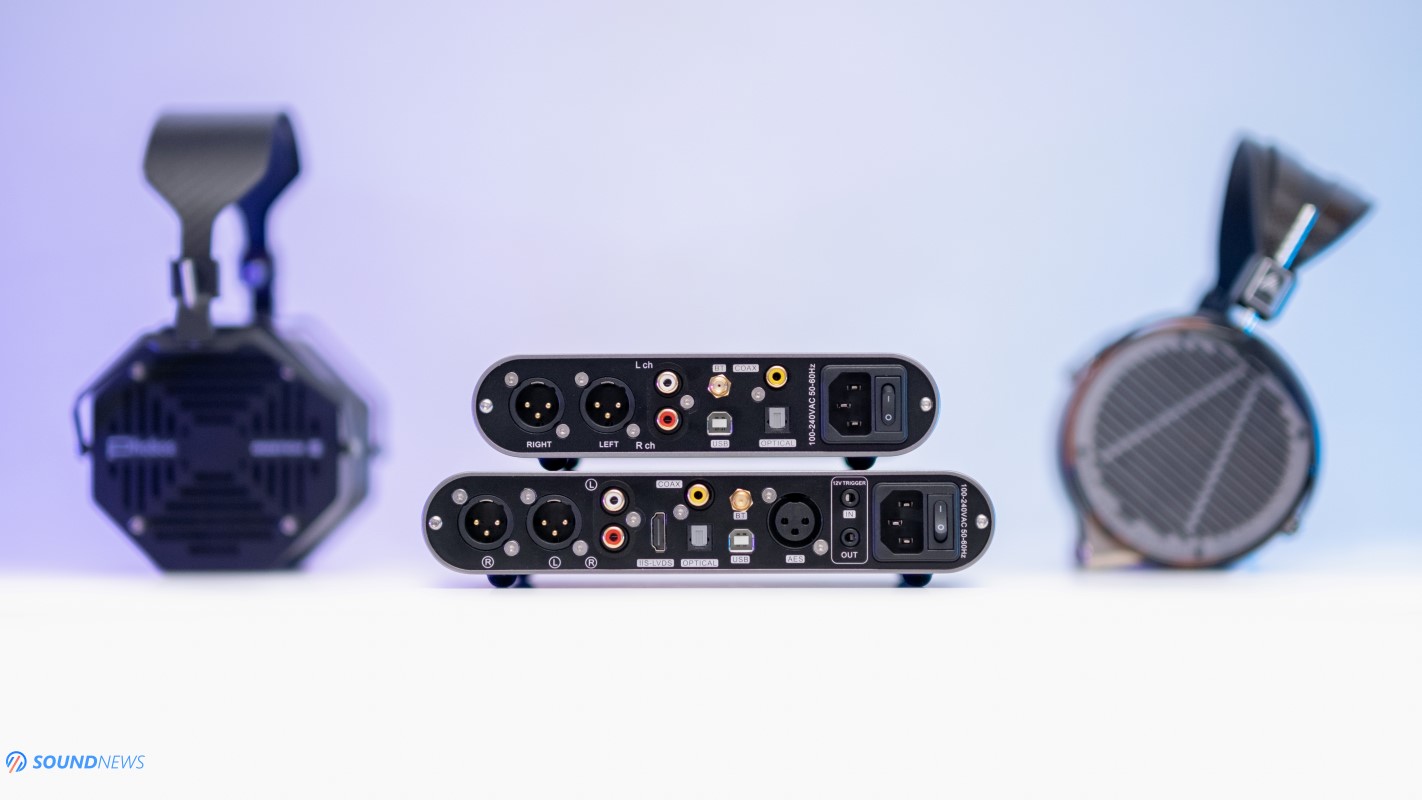
VII. Detail Retrieval & Transparency
Christ on a bike! It seems DX7 PRO+’s resolving abilities are challenging not only Topping, SMSL and Gustard amplifiers, but literally all units that were tested around here. I’ve arrived at the culmination of what makes it truly special and in my eyes that’s certainly its highly resolving nature. DX7 PRO+ was always clean, resolving, very honest in its presentation, pushing forward as much information as possible. Making clean and detailed sounding all-in-one units at $599 is no easy task, but if somebody is going to do that, it would certainly be Topping. To me, detail retrieval is extremely important, so I could skip the GIGO effect (Garbage In > Garbage Out). If you combine a clean performance of the flagship ESS-Sabre chip with absolute transparency of NFCA modules, then you are simply getting the sound of DX7 PRO+ all wrapped in a small and lightweight chassis.
Their top-of-the-line D90SE still offers a little bit more information, especially in the low-end, but DX7 PRO+ felt extremely close when put on reference recordings. if I would use usual 16-bit PCM files, then I could hardly tell which is which and that makes DX7 PRO+ an absolute steal of a DAC, with a preamp and headphone amp section coming as a bonus. A few years ago, a performance like this would cost you an arm and a leg, but things are changing so fast and I can’t imagine what future holds for us all. In my view, DX7 PRO+ sounded impressively clean, but never going overboard with its sharpness. It has a good linearity, meaning that it wasn’t clinical or boring in long listening sessions. I could focus on the smallest nuances with headphones like Sennheiser HD800S and all that felt like a child’s play for it.
Just before Topping created their NFCA modules, the cleanest and most detailed headphone amplifiers were using THX-AAA modules that ruled supreme for several years in a row, never to be challenged by anyone, until Topping dropped their A90 bomb, proving that world-class levels of performance can be achieved with as little as $500. DX7 PRO+ uses a similar circuity and noise shaping techniques and to me this is detail retrieval & transparency incarnate. DX7 PRO+ is quite neutral (if I’m not touching its sound enhancements), I find it achromatic, always choosing absolute linearity. With it, nothing stands out and yet, everything is located exactly where it should belong. At first, it might appear as uninteresting and slightly anemic, but as time passes by, you’ll start appreciating its honest and unaltered approach to sound reproduction. If you want, you can still add some color with Transistor or Valve Sound enhancements for a different flavor. In the end, we’re getting a clean, undistorted and detailed sounding unit, without becoming clinical or boring.

VIII. Frequency Response
Topping went with a fairly neutral frequency response, without limiting both ends of the spectrum. I find it extended from the lowest octaves to the highest treble peaks, without adding an over-sharpness filter all over my music.
A. Bass
I felt a higher presence in the mid-bass region and a gentler sub-bass delivery. DX7 PRO+ offers some weight down low and it seems that NFCA modules are putting a higher accent on bass quality, rather than quantity. If you want a better kick down low, then nothing will satisfy you more than its Transistor Sound preset, that worked better with planar magnetic headphones. I find it lightning fast and just mildly visceral. It was hitting me relentlessly in a satisfactory manner as electronica tunes sounded good to almost great. There’s a smidge of warmth and smoothness that makes it desirable compared to mid-level THX-AAA amplifiers. There were moments when I craved for a nicer bass slam, but with the right headphones or loudspeakers, I’ve had all the energy I wished for. This is still a linear DAC, preamp and headphone amplifier, so expect bass notes only when those are called for.
B. Midrange
The midrange will alter its character depending on the sound preset. If you enjoy linear sounding combos, then disable its sound presets for good. For a stronger bass and midrange delivery go with Transistor Sound and for a serious boost in midrange delivery, while slashing a few dBs from the top octave, nothing does it better than Valve Sound preset. While I won’t call its midrange meaty and full-bodied, as it was the case with pricier all-discrete combos from the likes of Burson Audio, Audio-GD and Flux Lab Acoustics, DX7 PRO+ still felt warmer sounding compared to regular THX-AAA combos. Mid tones were nicely rendered, voices had a decent amount of weight to them, string-based instruments had a longer vibration and decay, adding a pinch of naturalness and warmth into a linear sounding combo. I consider it having a neutral midrange that is leaning towards smoothness and naturalness. This is good neutrality, playing safe for the most part, without becoming boring or emotionless.
C. Treble
There wasn’t a single Topping unit that didn’t impress me right away with a precise, defined and clean treble performance. I find it extended in here and you’ll definitely hear every small nuance and shimmer. Snare drums felt powerful and impactful, while cymbals were focused, decaying slowly and naturally. If you ever heard a NFCA amplifier by now, then DX7 PRO+ would feel like having a Deja-Vu. Its predecessor (DX7 PRO), had more treble ringing in here, which made it a troublesome partner with bright sounding headphones. Topping solved that issue to some degree as even Hifiman headphones weren’t bothering in long listening sessions. Topping nicely balanced its treble delivery, so it would still be clean and detailed, without getting ringing and a nasty brightness. If you like your trebles clean and textured, then you are definitely reading the right article, as it renders bells, cymbals, tambourines and snare drums with utmost accuracy.
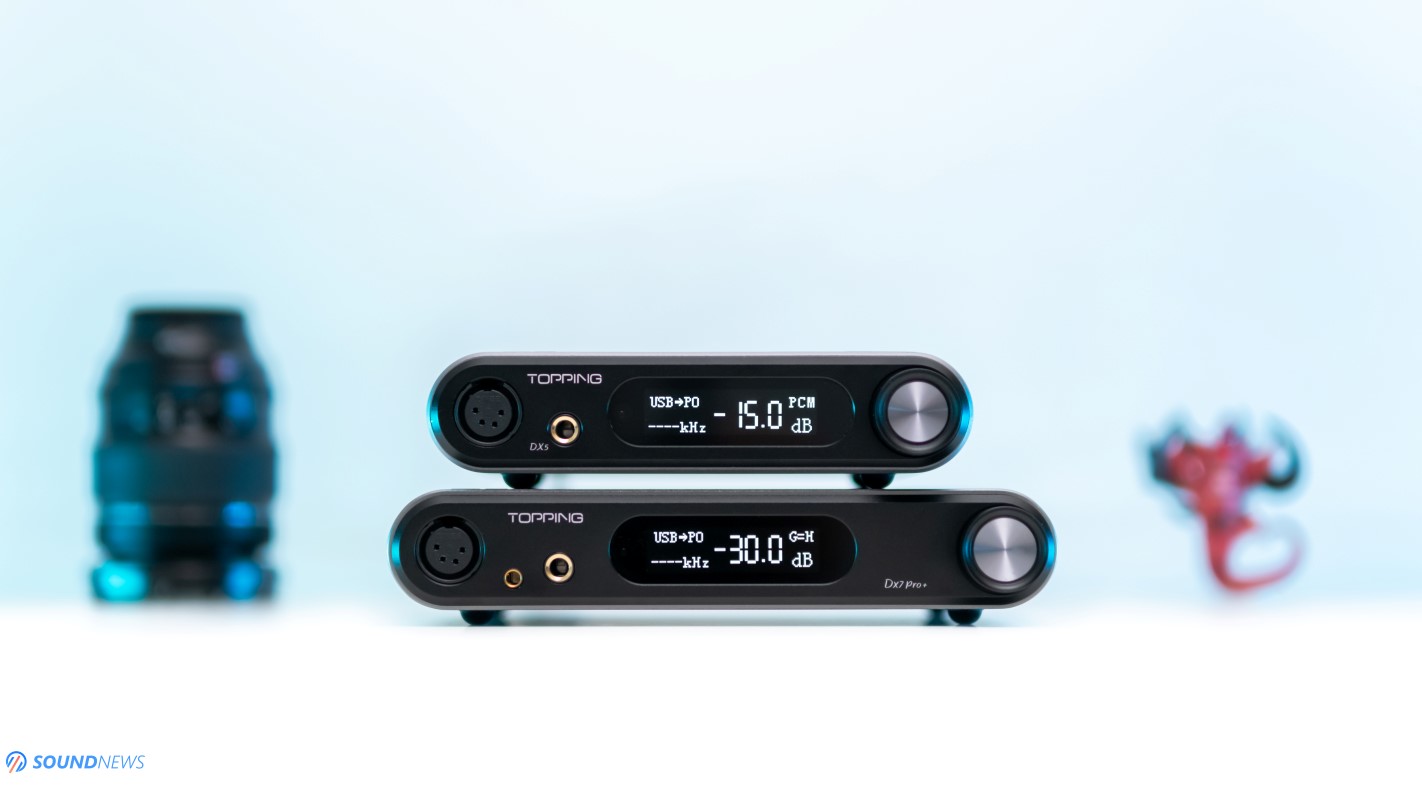
My Conclusion
Well-balanced DACs and nested-feedback composite amplifiers were always to my liking. When mixing them together in the same case, you are getting absurd levels of details, all the speed and acceleration you can think of, an instant decay of the notes, a wide frequency response and a see-through transparency, at the cost of a gentler punch in the bass. I can only nitpick about its limited power output with the most difficult loads, about a less impressive soundstage, shy character down low and this is where my complaints would see a full stop.
For such an affordable and fairly small unit, you are still getting an outstanding feature set. A great preamp is on board, the newest and the highest spec Bluetooth receiver is in there too and its headphone amp section will drive the biggest majority of headphones. Last but not least, you are getting an honest sounding DAC that won’t sugar coat your music in any way, leaving it as pure as possible. The newest DX7 PRO+ is still one of the most impressive all-in-one combos below $1000 and for all of the reasons combined, it fully deserved our Silver Award.

Topping DX7 PRO+ will set you off $699 and it was kindly provided by the fine gents of Apos Audio. It can be purchased from their web-store by following this link. (They still offer free shipping in the USA and Canada, free 45-day returns in case you don’t like it, an extra year of warranty and the lowest price guarantee). In case you’re getting one, please let me know in the comments section below.
PROS:
- Sleek looking, solid build quality
- Small footprint and lightweight enough
- Extended frequency response on both ends
- Colorless DAC and headphone amplifier section
- Noiseless even on high-gain and maximum power
- Highly detailed and resolving sounding, on par with several pricier units
- Offers a precise imaging and only a decent layering
- Clear leading edges and contour of the notes
- Outstanding speed and decay of the notes
- Lacks digital glare and listening fatigue
- Great Bluetooth coverage
- A feature packed 4-in-1 combo
- An outstanding value!
CONS:
- Not as punchy and impactful sounding as I wished for
- Soundstage and depth could be improved in the future
- Couldn’t drive the heaviest loads
ASSOCIATED EQUIPMENT:
- DACs: Topping DX7 PRO+, Musician Aquarius, Musician Pegasus, Audiobyte HydraVox & HydraZap, Chord Electronics Dave, Gold Note DS-10 Plus & PSU-10 Evo, Ferrum ERCO, Gustard R26 Discrete
- DDCs: Musician Phoenix, Singxer SU-6
- DAPs: FiiO M17, M11 Plus ESS, M11S, Shanling M7, M6 Ultra, Hiby RS6
- Headphone Amps: Trafomatic Primavera, Trafomatic Head 2, Enleum AMP-23R, Burson Soloist 3X GT, Ferrum OOR + Hypsos, Flux Lab Acoustics Volot, Topping A90 Discrete
- Preamps: Musician Monoceros
- Power Amps: Benchmark AHB2 (x2), Burson Timekeeper 3i
- Loudspeakers: KEF Reference 3, Natural Sound NS-17, Sound of Eden Crescendo UNO
- IEMs: FiiO FH9, FA9, FH7, Meze Rai Penta, Rai Solo, LittleDot Cu KIS, Hiby Crystal 6, 7Hz Timeless, Kinera Skuld & others
- Full-sized headphones: Audeze LCD-5, Audeze LCD-4, Hifiman Susvara, Hifiman HE1000SE, Arya Stealth, Sennheiser HD800S, Erzetich Phobos V2021, Phobos V2018, Erzetich Mania, Kennerton Rognir, Vali, Apos Caspian, Sendy Peacock, Apollo, HarmonicDyne Poseidon & others
- Interconnects: QED Reference (x2), Topping TCX1 (x2)
- USB Cables: Supra USB Excalibur (x2), Chord C-USB, Matrix Hi-Fi USB
- HDMI Cables: Supra 8K HDMI 2.1 (x2)
- Speaker cables: Kimber PR8, Audioquest Type4
- Power Cables: Isotek EVO3 Premier (x3), iFi Audio SupaNova (x2)
- Balanced Isolation Power Conditioners: PLiXiR Elite BAC1500 (stereo setup), Elite BAC400 (headphone setup)
